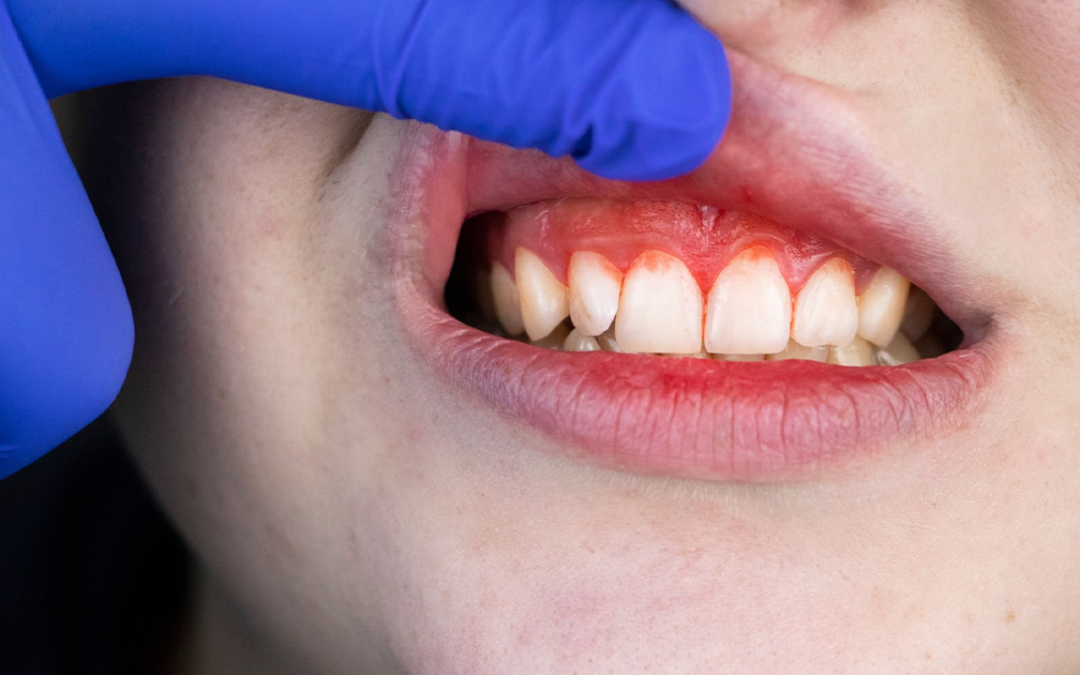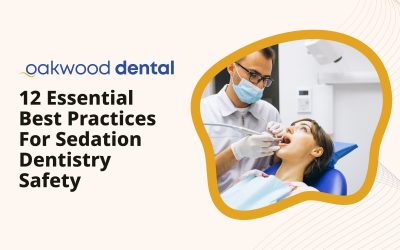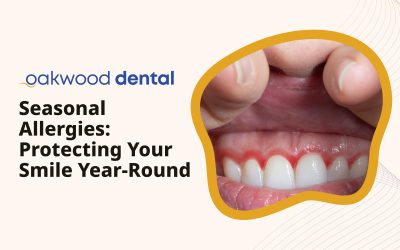Periodontal disease (gum disease) represents a significant oral health concern affecting approximately 50% of the adult population in the United States. This condition carries substantial implications for both oral and systemic health when left untreated. Proper oral hygiene maintenance is essential for preventing periodontal disease and its associated complications, which range from tooth loss to increased risk of systemic health conditions. This comprehensive guide examines seven critical indicators of periodontal disease that warrant immediate attention, along with evidence-based recommendations for maintaining optimal gum health.
| Key Takeaways |
|---|
|
– Periodontal disease affects a significant portion of U.S. adults – Early detection is crucial for preventing disease progression – Seven primary indicators include bleeding gums, inflammation, and bad breath. – Regular professional dental care and proper oral hygiene are essential for prevention – Periodontal health significantly impacts systemic wellness |
Periodontal Disease: A Clinical Overview
Gum disease, clinically termed periodontal disease, represents an inflammatory condition affecting the supporting tissues of the dentition. The main cause is bacterial plaque accumulation, which, in the absence of proper oral hygiene measures, calcifies into calculus. Risk factors include inadequate oral hygiene, tobacco use, certain medications, and systemic conditions such as diabetes mellitus.
Periodontal disease develops in stages, starting with gingivitis and potentially worsening into periodontitis. Gingivitis is the early stage, causing gum inflammation, but it can usually be reversed with good oral hygiene. If left untreated, it can progress to periodontitis, a more severe condition that leads to permanent damage to the gums and bone supporting the teeth. Early detection and treatment are essential to prevent the disease from worsening and causing serious issues, such as tooth loss and potential impacts on overall health. Research suggests a link between severe gum disease and heart problems, as well as difficulties in managing blood sugar levels in people with diabetes.
7 Clinical Manifestations of Periodontal Disease
1. Gingival Hemorrhage
Bleeding gums, especially during brushing or flossing, are often an early sign of gum disease. While occasional bleeding can occur from brushing too hard or adjusting to a new flossing routine, persistent bleeding is a warning sign of gum inflammation that shouldn’t be ignored.
If you notice bleeding gums, prompt action is important. This is often a sign of early-stage gum disease, which can still be reversed with proper care. Improving oral hygiene with gentle brushing and regular flossing can help in mild cases. However, if the bleeding persists, a dental evaluation is necessary to determine the cause and ensure appropriate treatment.
2. Gum Inflammation and Swelling
Healthy gums are firm, coral pink, and have a smooth, well-defined shape. When inflammation occurs, gums may become red, swollen, and lose their normal texture. This can lead to tenderness and the formation of pockets between the teeth and gums, creating an environment for bacteria to accumulate and multiply.
Gum inflammation can cause increased tooth sensitivity and discomfort. If left untreated, it may progress and lead to more severe damage to the gums and supporting structures. Early intervention, including improved oral hygiene and professional care, can help reverse these effects. Treatment options may involve antimicrobial mouth rinses or targeted therapies to reduce inflammation.
3. Gingival Recession
Gingival recession manifests as apical migration of the gingival margin, exposing root surfaces previously protected by periodontal tissues. Multiple etiological factors contribute to this condition, including traumatic brushing technique, genetic predisposition, hormonal variations, and advanced periodontal disease.
This clinical presentation requires timely attention to prevent worsening and potential complications. When the roots become exposed, they are more vulnerable to cavities and sensitivity. Treatment options vary from non-surgical approaches to gum surgery, depending on the severity and cause. Addressing the issue early improves outcomes and minimizes the need for more invasive procedures.
4. Chronic Halitosis (Persistent Bad Breath)
Unlike temporary bad breath from certain foods, chronic halitosis can be a sign of gum disease. Bacteria in the gums break down proteins, releasing sulfur compounds that cause a persistent unpleasant odor.
Chronic bad breath that doesn’t improve with regular brushing and flossing may indicate a deeper gum issue. Deep pockets in the gums can trap bacteria, creating an environment where harmful microbes multiply. Professional cleaning and targeted antimicrobial treatments may be needed to address the root cause.
5. Tooth Mobility
As gum disease worsens, the structures that support the teeth weaken, causing them to become mobile. This can be a sign of significant damage to the gums and underlying bone. Changes in bite alignment or shifting teeth may also occur as the condition progresses.
Tooth mobility represents an advanced manifestation of periodontal disease requiring immediate professional intervention. The extent of mobility correlates with the degree of periodontal destruction and often necessitates comprehensive periodontal therapy. Treatment approaches may include mechanical debridement, which involves the thorough removal of plaque and tartar from the tooth surfaces and below the gumline to control infection and promote healing, occlusal adjustment, and potential surgical intervention to regenerate lost periodontal support.
6. Masticatory Discomfort and Dentinal Hypersensitivity
Advanced periodontal disease may lead to discomfort while chewing and increased dentinal sensitivity. These symptoms often arise from exposed root surfaces and inflammation of the supporting periodontal structures. Thermal stimuli, such as temperature changes, along with mechanical pressure, can trigger heightened sensitivity due to the loss of protective gum coverage. If left untreated, ongoing exposure can exacerbate discomfort and contribute to further periodontal deterioration.
Clinical management of these symptoms involves treating both the underlying periodontal disease and associated dentinal hypersensitivity. Treatment approaches may include the application of desensitizing agents, protective measures for exposed root surfaces, and comprehensive periodontal therapy to reduce inflammation and promote tissue regeneration. Early intervention can help alleviate discomfort and prevent further deterioration of periodontal structures.
7. Occlusal Alterations
Progressive periodontal disease can result in significant alterations to occlusal relationships as supporting structures become compromised. Patients may report changes in bite patterns, difficulty achieving comfortable occlusion, or development of spacing between teeth. These changes occur gradually as periodontal destruction advances.
Managing bite-related issues requires a comprehensive approach that addresses both gum disease and misalignment. Treatment may include gum therapy, bite adjustments, or orthodontic care to restore proper function. Early intervention optimizes therapeutic outcomes and prevents further complications.
Preventive Protocols and Therapeutic Management
Maintenance of periodontal health requires implementation of comprehensive preventive protocols and appropriate therapeutic intervention when indicated. Essential elements of periodontal health maintenance include:
- Implementation of proper mechanical plaque control measures utilizing soft-bristled instruments
- Regular interdental cleaning with appropriate interdental aids
- Use of prescribed therapeutic antimicrobial mouth rinses
- Maintenance of proper nutrition with adequate vitamin C and D intake
- Cessation of tobacco use and moderation of alcohol consumption
- Regular professional dental examinations and prophylaxis
- Utilization of advanced cleaning aids such as powered interdental devices
- Maintenance of proper hydration
Clinical management of established periodontal disease usually begins with a deep cleaning procedure called scaling and root planing, which removes plaque and tartar from below the gumline. In more severe cases, surgical treatment may be necessary to reduce deep gum pockets, or we may need to perform regenerative or mucogingival procedures to restore lost tissue and improve gum health.
The Oral-Systemic Connection
Contemporary research has established significant associations between periodontal health status and systemic conditions. This bidirectional relationship, termed the oral-systemic connection, has garnered substantial attention in recent scientific literature. The mouth can act as a gateway for the spread of inflammation and harmful bacteria throughout the body.
Scientific research suggests a possible link between gum disease and systemic health conditions such as heart disease, diabetes, and respiratory disorders. The inflammation caused by gum disease may contribute to overall systemic inflammation, which is a known risk factor for chronic illnesses. Studies have also shown that individuals with untreated gum disease may have a higher risk of heart-related issues, possibly due to the spread of harmful bacteria from the mouth into the bloodstream.
There is a two-way connection between gum disease and diabetes. People with diabetes are more prone to infections, including gum disease, while severe gum inflammation can make it harder to control blood sugar levels. Because of this link, managing both conditions together is essential for better overall health.
Maintaining good gum health during pregnancy is important, as gum disease has been linked to complications like preterm birth and low birth weight. Additionally, some studies suggest a possible connection between poor oral health and an increased risk of certain malignancies, though further research is warranted.
Optimal oral health maintenance contributes significantly to overall systemic well-being. Regular dental evaluations, implementation of proper oral hygiene protocols, and maintenance of a healthy lifestyle support both periodontal and systemic health. Integration of oral health considerations into comprehensive medical care ensures optimal patient outcomes. Patients with concerns regarding oral-systemic health interactions should engage in detailed discussions with both dental and medical providers to ensure comprehensive care coordination.
Conclusion: Implementation of Evidence-Based Periodontal Care
Recognition and appropriate response to periodontal disease indicators proves essential for maintaining optimal oral and systemic health. The seven clinical manifestations discussed—gingival hemorrhage, inflammation, recession, halitosis, tooth mobility, masticatory discomfort, and occlusal alterations—warrant prompt professional evaluation when observed. Early intervention in periodontal disease progression significantly improves therapeutic outcomes and reduces risk of complications.
Implementation of evidence-based preventive protocols, combined with appropriate therapeutic intervention when indicated, optimizes periodontal health outcomes. Regular professional dental evaluations, proper oral hygiene maintenance, and adoption of healthy lifestyle practices contribute to long-term periodontal stability. This proactive approach to periodontal health encompasses daily preventive measures, lifestyle modifications, and regular professional monitoring.
The significant impact of periodontal health on systemic well-being emphasizes the importance of maintaining optimal oral health. Implementation of comprehensive periodontal care protocols not only preserves natural teeth but supports overall health status. By recognizing early signs of gum disease and seeking timely treatment, patients can maintain optimal oral health and support systemic well-being throughout their lifetime.

 718-979-2121
718-979-2121










